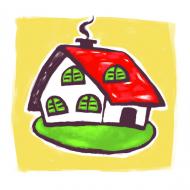 In modern society, the application of standards provides for transparency and compatibility of the results of work at individual stages of development of a product or service, and their route to the user.
In modern society, the application of standards provides for transparency and compatibility of the results of work at individual stages of development of a product or service, and their route to the user.
In contemporary world, standards are indispensable in rationalization of production and services, as they eliminate many an unnecessary barrier to trade. In standards, one can find technical specifications and other precise criteria that are often used as rules, instructions, test procedures or definitions, and as currently established state of the art, they provide the basis for new development.
Copyright protection of SIST Standards
 In accordance with the applicable Bern Convention and Slovenian legislation in the area of copyright protection, standards as texts are copyright protected works. Therefore, reproduction, copying or distribution of a complete standard or parts thereof without permission of the owner of material rights shall not be permitted.
In accordance with the applicable Bern Convention and Slovenian legislation in the area of copyright protection, standards as texts are copyright protected works. Therefore, reproduction, copying or distribution of a complete standard or parts thereof without permission of the owner of material rights shall not be permitted.
As the national standards body, SIST owns the exclusive right to distribute standards (also European and International Standards), the right to copy, publish standards and other publications which include standards, in any form.
As a full member of the international organizations for standardization ISO and IEC, as well as the European organizations CEN and CENELEC, SIST is obliged to protect the copyright of standards, to promote the application of standards, to disseminate information on correct use of standards, and to respect all the rules regarding reproduction, distribution and sale of standards and other publications published by these organisations. SIST has entered the international and European rules on protection of standards into the "SIST Instruction on Protection of Intellectual Property Rights".
See more on protection of standards at:
ISO/IEC: Copyright, standards and the Internet: https://www.iso.org/iso/copyright_information_brochure.pdf
CEN-CENELEC GUIDE 10: ftp://ftp.cencenelec.eu/EN/EuropeanStandardization/Guides/10_CENCLCGuide10.pdf








